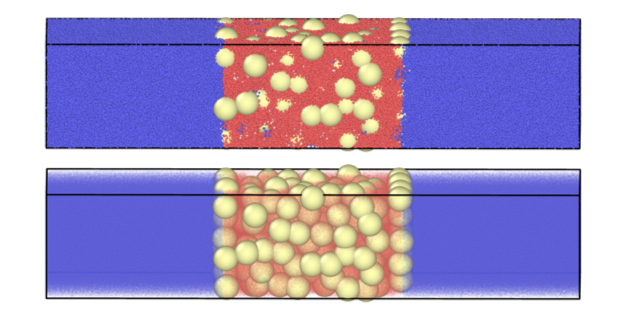2020 Virtual AIChE Annual Meeting
(382d) Phase Behavior of Polymer-Grafted Nanoparticles in Solution
Authors
Andrew P. Santos - Presenter, Princeton University
Amalie Frischknecht, Sandia National Laboratories
Richard Vaia, Wright Patterson Air Force Base
Sarah N. Izor, Air Force Research Laboratory
Allen B. Schantz, Air Force Research Laboratory
The phase behavior of polymer-grafted nanoparticles can be computationally challenging to obtain using particle-based simulations, especially with long polymers. The theoretically-informed Langevin dynamics method enables the simulation of large collections of nanoparticles grafted with polymers much longer than those typically accessible by molecular dynamics, and yet also includes fluctuations which are neglected in typical self-consistent mean field methods. The temperature-concentration phase diagram of polystyrene grafted gold nanoparticles in cyclohexane is determined using this relatively new method, by explicitly simulating the phase boundary between particle-rich and particle-poor phases as shown in the figure. Simulation results are compared with phase diagrams obtained from cloud-point and small-angle x-ray scattering experiments. The phase behavior depends on nanoparticle size, graft degree of polymerization and graft density. Polymer configurations determined from the simulations help interpret the dependence of the phase behavior on material properties.
Sandia National Laboratories is a multimission laboratory managed and operated by National Technology & Engineering Solutions of Sandia, LLC, a wholly owned subsidiary of Honeywell International Inc., for the U.S. Department of Energyâs National Nuclear Security Administration under contract DE-NA0003525.
